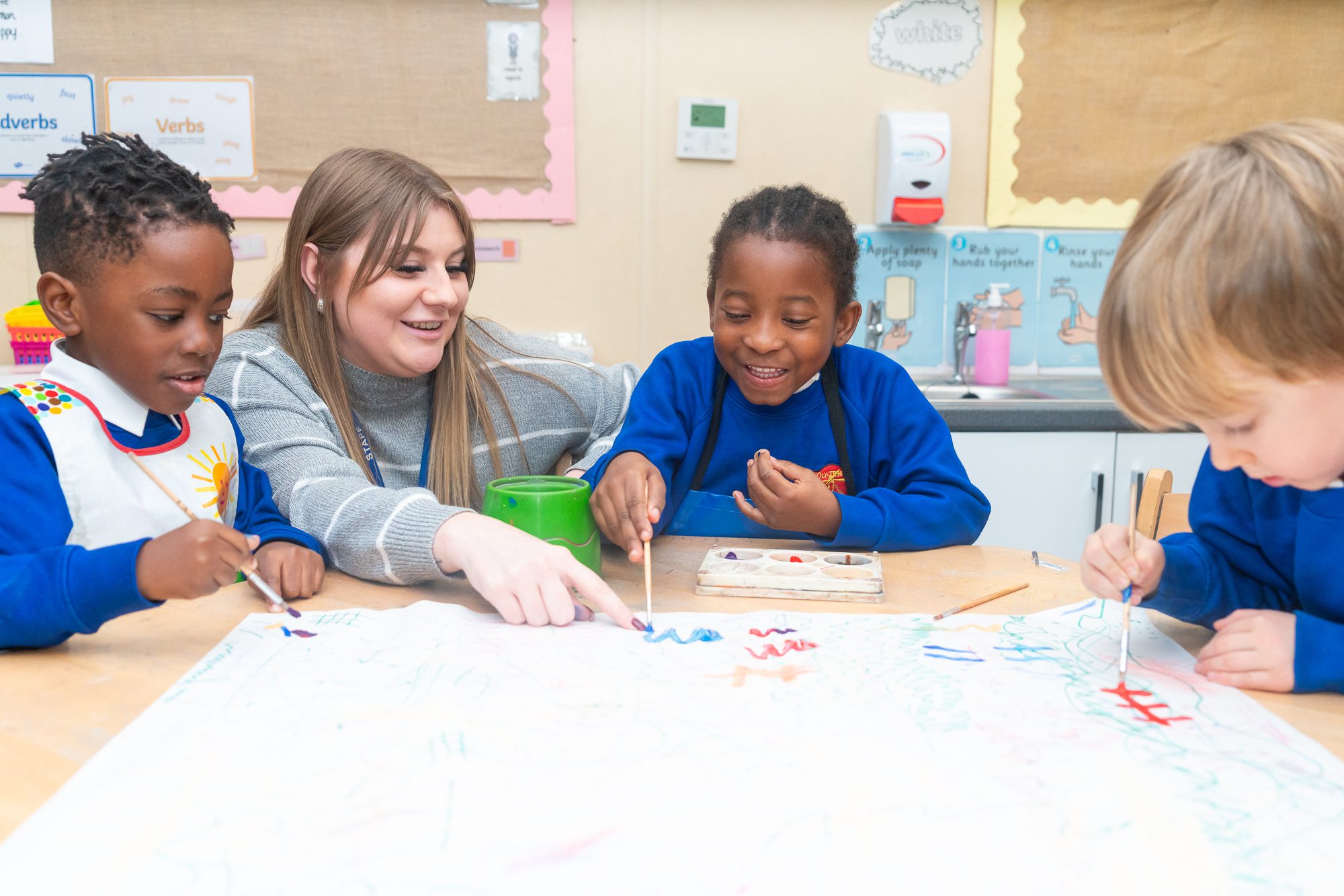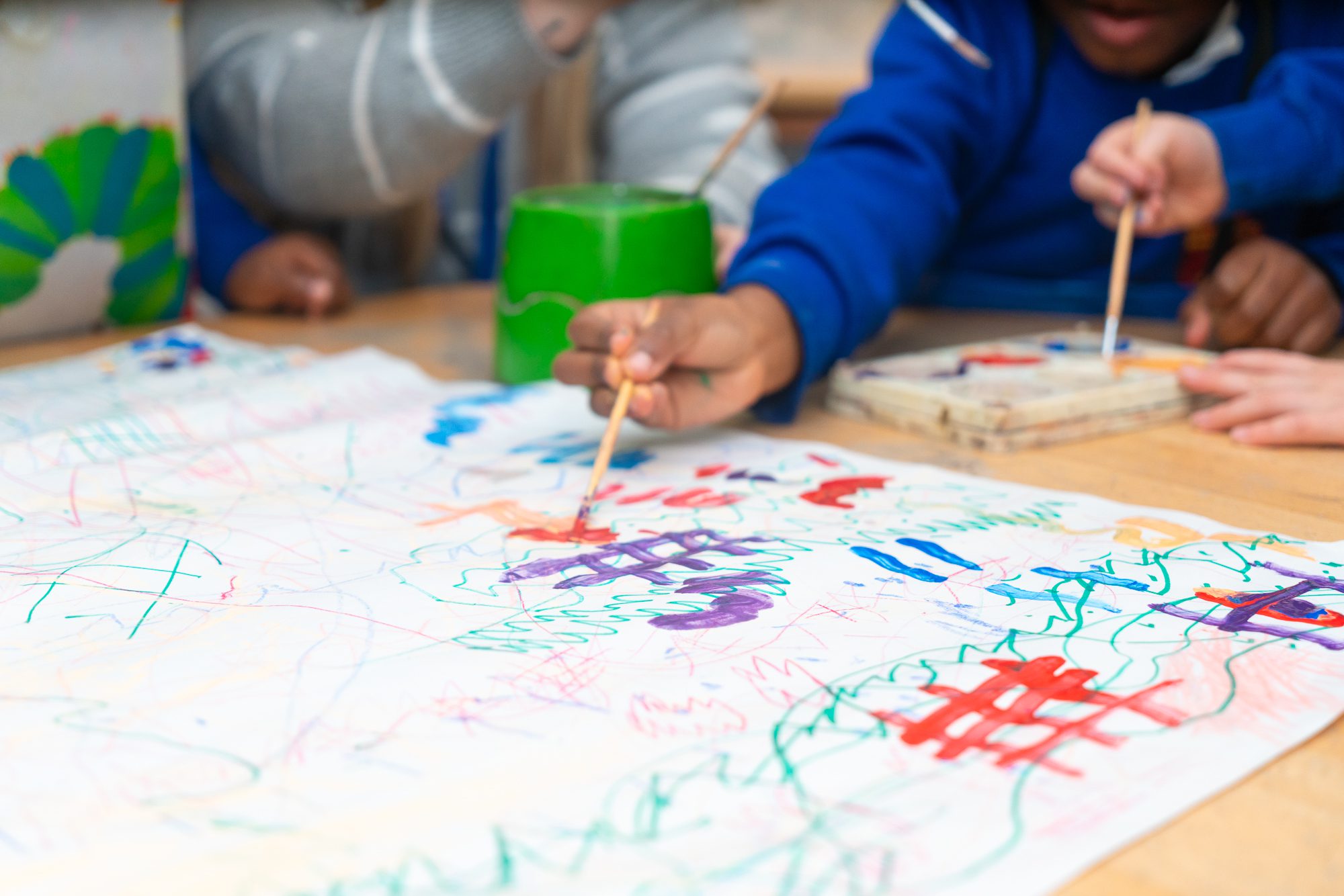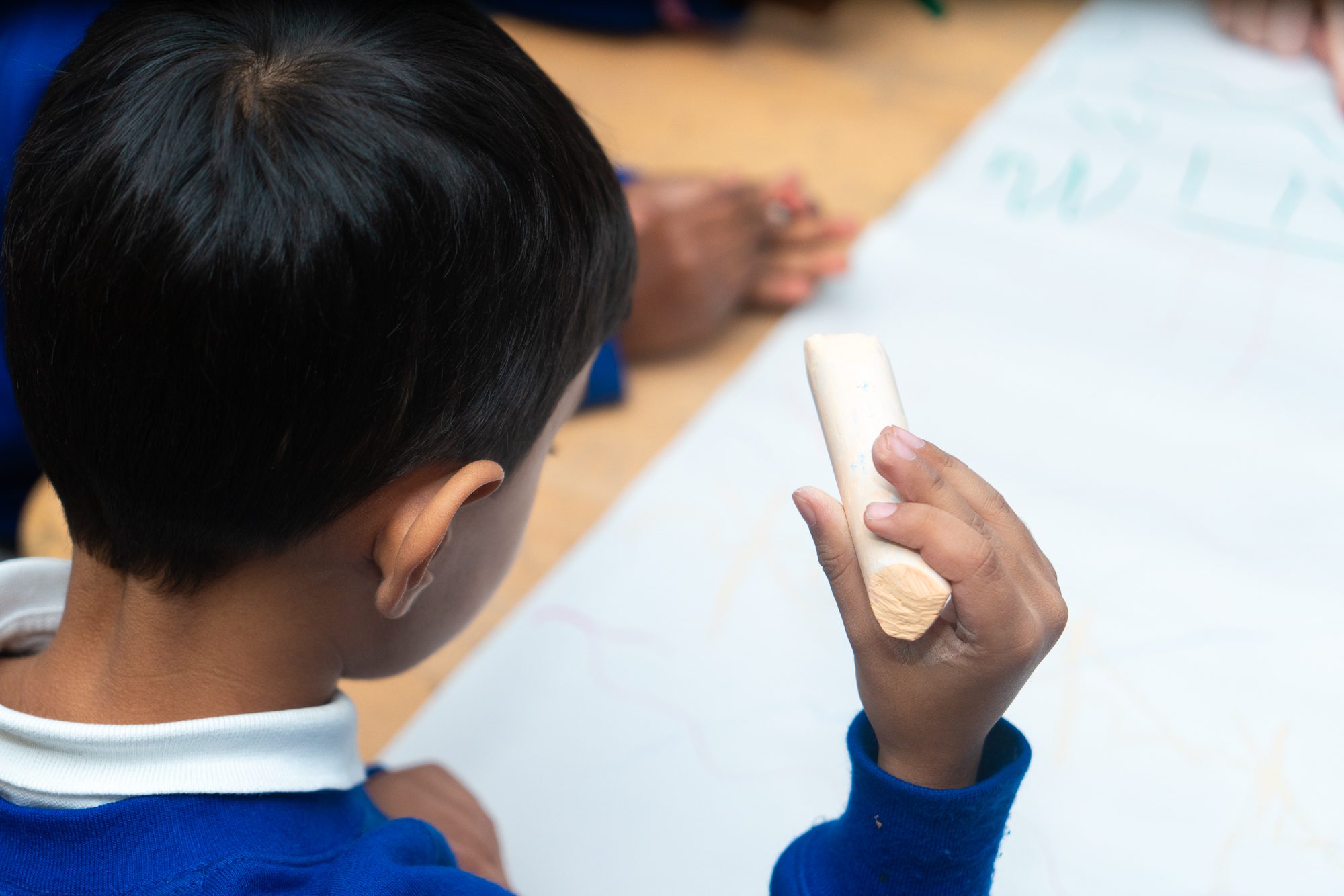Art and Design Subject Leader: Mrs V Kalapi
For any more information on Holy Trinity’s Art and Design Curriculum, please contact the office.
Within the curriculum, art and design have been formulated to captivate pupils and provide them with the ability to be expressive, in ways which other subjects may not permit. Pupils are taught to acquire and apply many transferable skills. They are able to experiment as well as collaborate, which then propels them to form a new way of communicating through problem-solving skills, self-discovery and discipline. Art and Design allow pupils to have an appreciation for creativity through the use of different mediums, tools and systems. Our vast culture and history are widely reflected through inspiration and imagination, therefore encouraging pupils to understand themselves and the world in a wider context.
Intent
Holy Trinity C of E Primary School believes that Art and Design are a vital part of our pupils’ education. The significance and value of this subject within the wider curriculum instigate personal growth and challenge preconceived constructions. Studying this subject equips pupils with the knowledge, maturity and skills needed to have a voice and celebrate diversity.
The Art and Design curriculum develops pupils’ purposeful use of artistic skills, processes, and experiences as educational tools. Sequences of lessons and experiences help them to develop their understanding of artists’ visual language and offer a variety of enrichment opportunities, which supports them in navigating life in a unique and profitable way. By providing a meaningful and relevant curriculum in Art and Design, pupils are able to develop more self-awareness and flourish while reaching their unrealised potential.


Implementation
As a school body, Holy Trinity aspires to continue to propel its pupils to live in fullness and grasp the concept of Art and Design in an individual and dynamic fashion. A small assortment of programmes, schemes and resources are frequently used to converge these aspirations.
The Cornerstones Curriculum recognises and explores works by various artists and challenges pupils from Year 1 to Year 6. Alongside this curriculum, Kagan-style questioning is used to improve and develop social skills and build increased and sustained interest in classroom interaction.
Through the use of Rosenshine’s 10 Principles of Instruction within this subject, an array of small measurable steps are taken, to ensure a quantifiable cognitive load. The use of small steps and questioning often gauges students’ comprehension accurately. This in turn, allows them to manifest belief in their artistic ability and uncover more within the subject without fear of comparison.
Additionally, SEND students to benefit greatly from the programmes and schemes, as the lesson permits much more room for creativity and exploration through moral support. They are able to find strength in their difference which gives them the confidence to be a beacon of light in and out of the classroom.
Impact
The structure of the art curriculum ensures that children are able to develop their knowledge and understanding of the work of artists, craftspeople and designers from a range of times and cultures and apply this knowledge to their own work. The consistent use of children’s sketchbooks means that children are able to review, modify and develop their initial ideas in order to achieve high-quality outcomes. Children learn to understand and apply the fundamental principles of art: line, tone, texture, shape, form, space, pattern, colour, contrast, composition, proportion and perspective. Effective lesson sequencing and progression between year groups support the opportunity for children to refine and develop their techniques over time. This also helps children in achieving age-related expectations at the end of their cohort year.
Pupils can progressively accumulate and apply artistic knowledge to their own work and demonstrate increased confidence in their abilities. Guidance in initial techniques and mastery, allows a safe space to ultimately understand and apply the key principles of art: line, tone, texture, shape, form, space, pattern, colour, contrast, composition, proportion and perspective.
Pupils are able to review, modify and develop initial ideas, in order to achieve high quality outcomes through regular technical application and the use of sketchbooks.
Creative outcomes across the wider curriculum reflects the pupils’ sense of pride in their artwork.
It was once said, “Art is unquestionably one of the purest and highest elements in human happiness. It trains the mind through the eye, and the eye through the mind. As the sun colours flowers, so does art colour life.” ~John Lubbock (1834-1913), “The Pleasures of Life”
The school environment celebrates pupils’ achievements in art and demonstrates the subject’s valued status in the school. The Art curriculum contributes to personal development in motor skills, creativity and inventiveness, independence, judgement and processing emotions.

Art and Design in Each Stage
Art is taught in the area of Expressive Arts and Design, within the EYFS curriculum. During the year artwork is usually linked to the topics that we are studying. We would study at least one artist during the course of a year.
Throughout the year, seasonal celebrations and events also provide opportunities for artwork. For example, Diwali, Christmas and Chinese New Year are taught throughout the school and usually include an art element such as designing cards or masks
Pupils will be taught:
To use a range of materials creatively to design and make products:
- About the work of a range of artists, craft makers and designers, describing the differences and similarities between different practises and disciplines, and making links to their own work
- To use drawing, painting and sculpture to develop and share their ideas, experiences and imagination
To develop a wide range of art and design techniques in using colour, pattern, texture, line, shape, form and space
Pupils will be taught to develop their techniques, including their control and their use of materials, with creativity, experimentation and increasing awareness of different kinds of art, craft and design.
Pupils will be taught:
- About great artists, architects and designers in history
- To create sketch books to record their observations and use them to review and revisit ideas
To improve their mastery of art and design techniques, including drawing, painting and sculpture with a range of materials [for example, pencil, charcoal, paint, clay]
SEND Information
Our SEND and disadvantaged pupils are given the necessary support in class to fully access the supported Art & Design curriculum. Learning is adapted where necessary to support SEND/EAL pupils to give equal opportunities for all to be confident in approaching any problems faced. Interventions, support and challenges are constantly revised and adapted to ensure all children are supported in achieving learning. The above areas are robustly and continuously monitored to ensure any gaps in learning are addressed.
Art and Design Extra Resources
Further Art and Design Help

